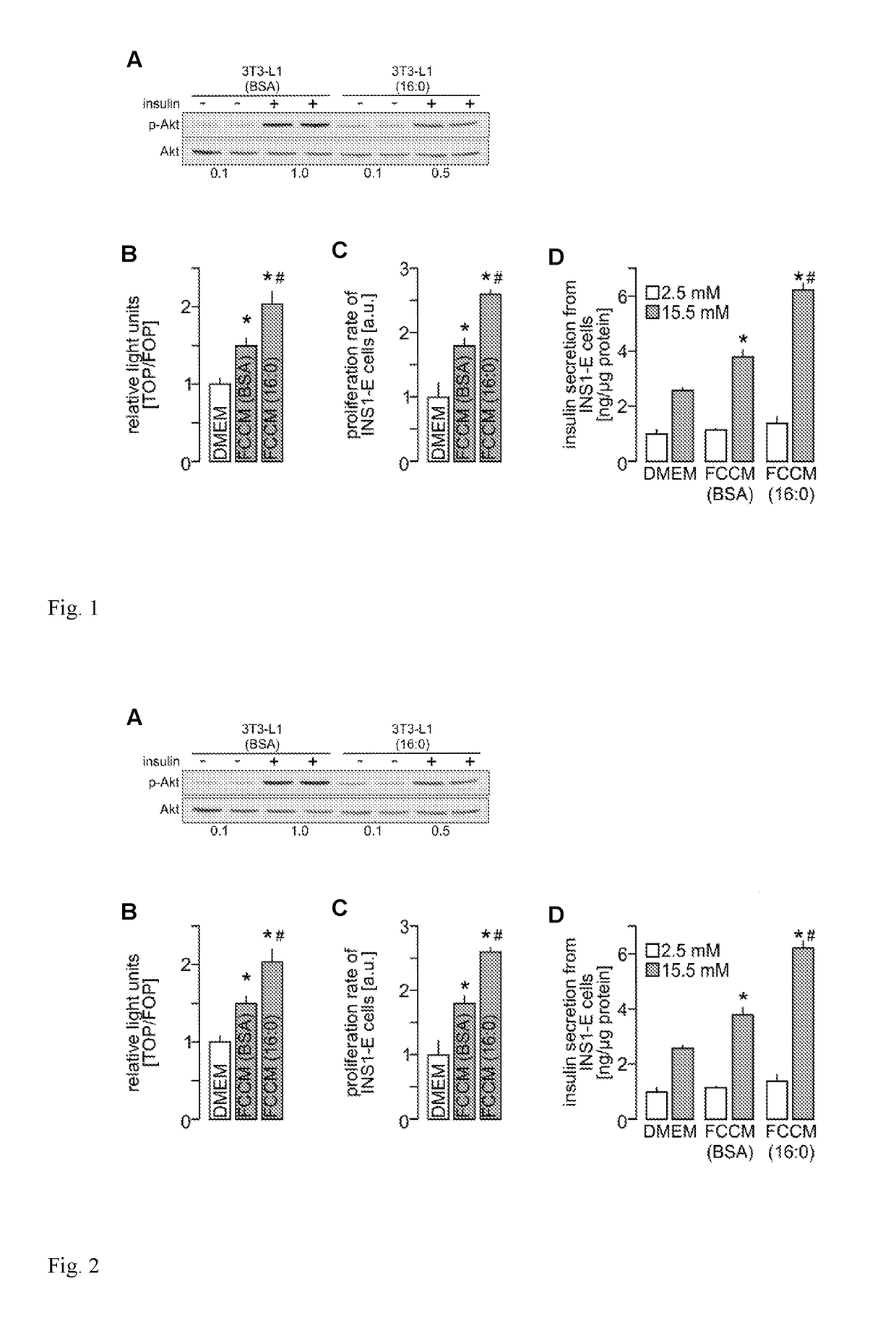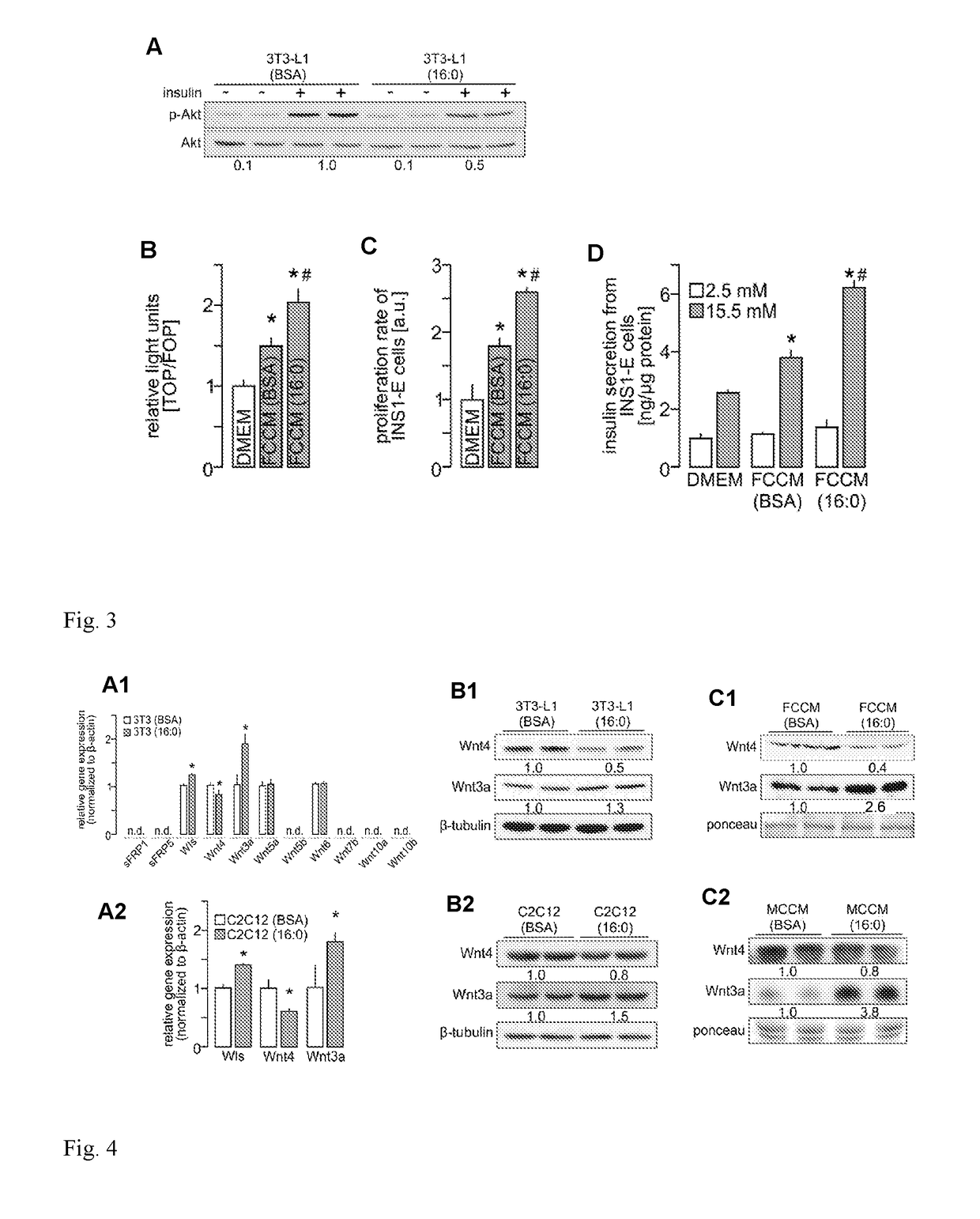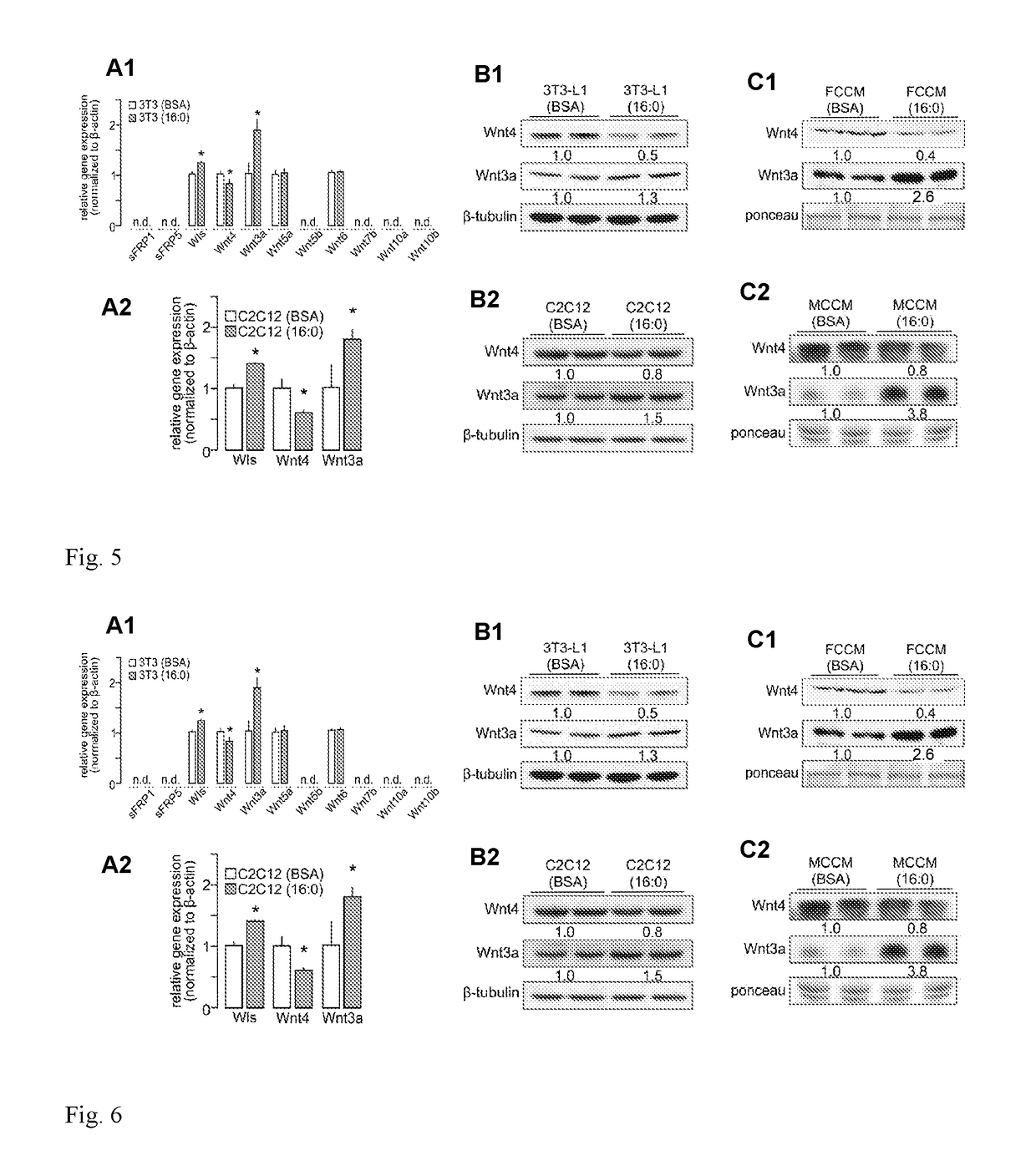Method for the early diagnosis of a pre-diabetic state and type 2 diabetes
a pre-diabetic state and early diagnosis technology, applied in the field of early diagnosis of a pre-diabetic state and type 2 diabetes, can solve problems such as pancreatic islet dysfunction
- Summary
- Abstract
- Description
- Claims
- Application Information
AI Technical Summary
Benefits of technology
Problems solved by technology
Method used
Image
Examples
example 2
[0037]Expression Profile of Genes Encoding Wnt Ligands, Protein Level of Wnt4 and Wnt3a and Rate of Secretion of these Proteins are Changed in Insulin Resistant Adipocytes and Myotubes.
[0038]Since we have shown that adipocytes produce Wnt activators sufficient to activate Wnt signaling in β-cells and to trigger insulin secretion and proliferation, we wanted to examine the identity of the Wnt ligands responsible for such stimulatory effect. We have performed Real-Time PCR screening in insulin resistant adipocytes in order to look for the possible changes in expression of the genes encoding Wnt ligands. Insulin resistance in 3T3-L1 adipocytes was induced by 16:0 treatment and confirmed by a decrease of AKT kinase phosphorylation state under insulin stimulation—the main downstream element of insulin pathway (FIG. 1 A). We have verified a wide reperoitre of Wnt related genes but only three of them exhibited changes in gene expression after insulin resistance induction in 3T3-L1 adipocyt...
example 3
[0039]Expression Profile of Wnt4 and Wnt3a in Insulin Resistant Tissues and the Secretion Rate of these Proteins into Blood Plasma is Changing During Progression of Diabetes.
[0040]To investigate whether data from in vitro studies are consistent with in vivo changes, we analyzed expression of Wnt4 and Wnt3a in white adipose tissue and gastrocnemius muscle in prediabetic and diabetic animal models. Wistar rats were fed with high fat (HF) diet for 8 weeks or 16 weeks to induce insulin resistance of peripheral tissues and diabetes, respectively, as showed by glucose tolerance test (FIG. 5A, 6A). Both HF-fed groups of animals showed impaired glucose metabolism in comparison to CHOW-fed groups. Next, we analyzed expression profile and protein content of Wnt4 and Wnt3a in visceral adipose tissue and gastrocnemius muscle. In pre-diabetic state, expression of Wnt4 was downregulated (˜0.4 fold change) while expression of Wnt3a was upregulated (˜1.6 fold change) in insulin resistant adipose ti...
example 4
[0042]Activation of Wnt Signaling is Correlated with β-Cell Adaptation to Systemic Insulin Resistance
[0043]The next step in our studies was to investigate how changes in expression profile of Wnt ligands in insulin resistant tissues influence functioning of the pancreatic β-cells within our pre-dabetic and diabetic animal models. Western blot analysis of pancreatic islets isolated from pre-diabetic rats showed accumulation of active beta-catenin (1.9 fold change) (FIG. 7 A1). This phenomenon was associated with increased insulin secretion (˜1.8 fold change) (FIG. 7 B1) and proliferation rate (˜1.6 fold change) (FIG. 7C1). In contrast, there was no difference in the level of active beta-catenin between pancreatic islets isolated from diabetic rats compared to healthy animals (FIG. 7 A2). Additionally, in case of islets originating from diabetic animals, insulin secretory capacity was no longer affected (FIG. 7 B2) and their proliferation rate was decreased by 0.4 fold change in compa...
PUM
| Property | Measurement | Unit |
|---|---|---|
| resistance | aaaaa | aaaaa |
| β-cell plasticity | aaaaa | aaaaa |
| mass | aaaaa | aaaaa |
Abstract
Description
Claims
Application Information
 Login to View More
Login to View More - R&D
- Intellectual Property
- Life Sciences
- Materials
- Tech Scout
- Unparalleled Data Quality
- Higher Quality Content
- 60% Fewer Hallucinations
Browse by: Latest US Patents, China's latest patents, Technical Efficacy Thesaurus, Application Domain, Technology Topic, Popular Technical Reports.
© 2025 PatSnap. All rights reserved.Legal|Privacy policy|Modern Slavery Act Transparency Statement|Sitemap|About US| Contact US: help@patsnap.com



